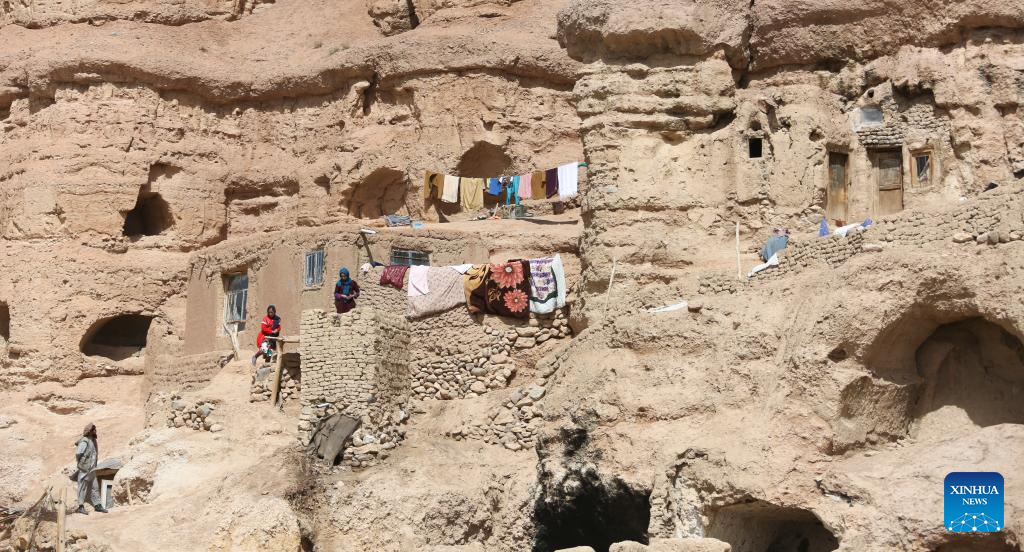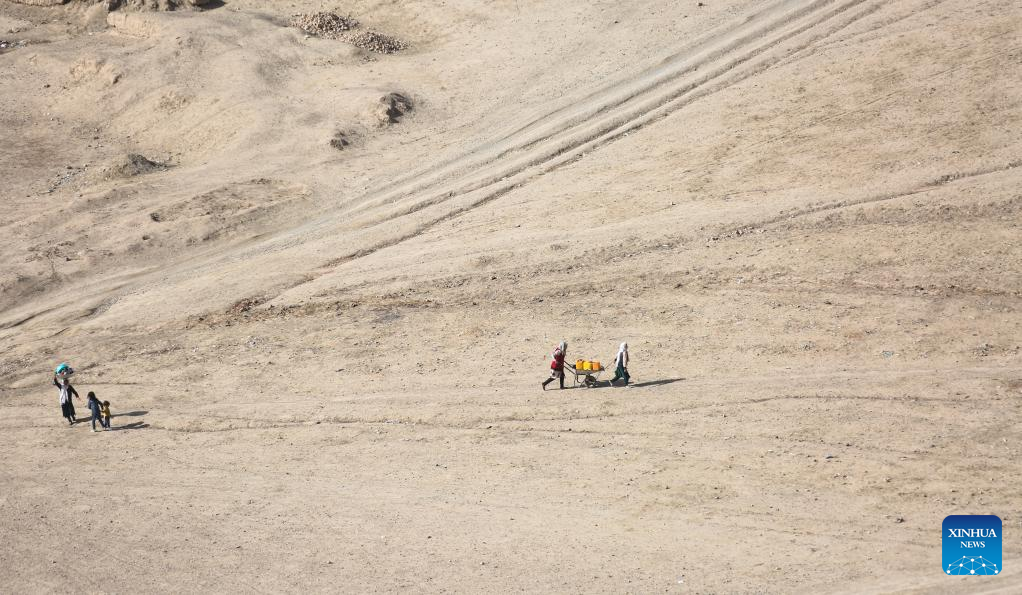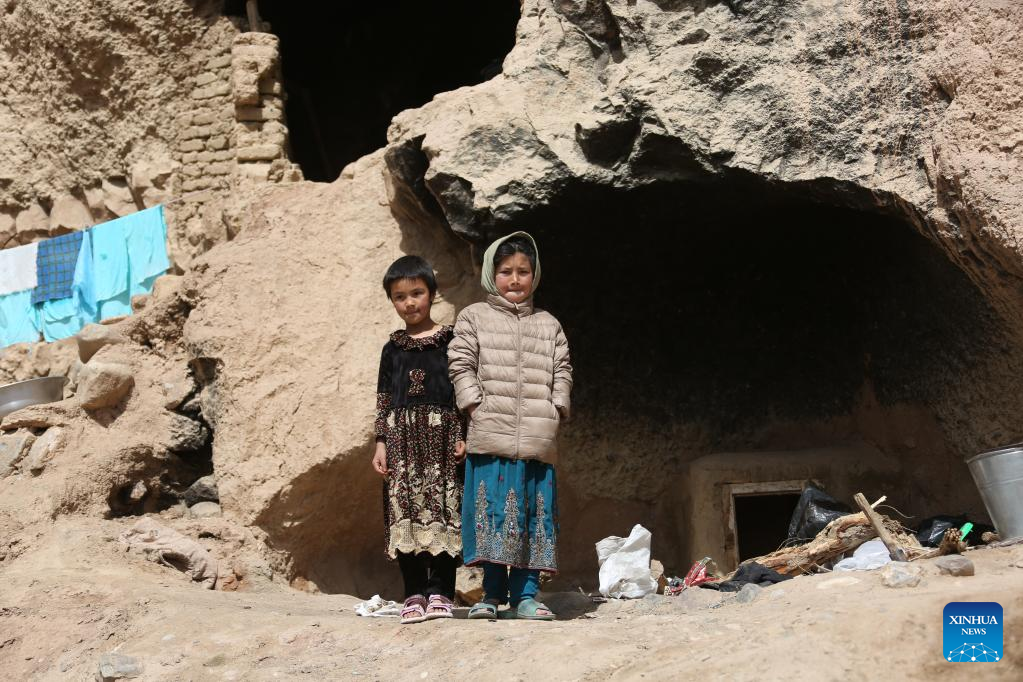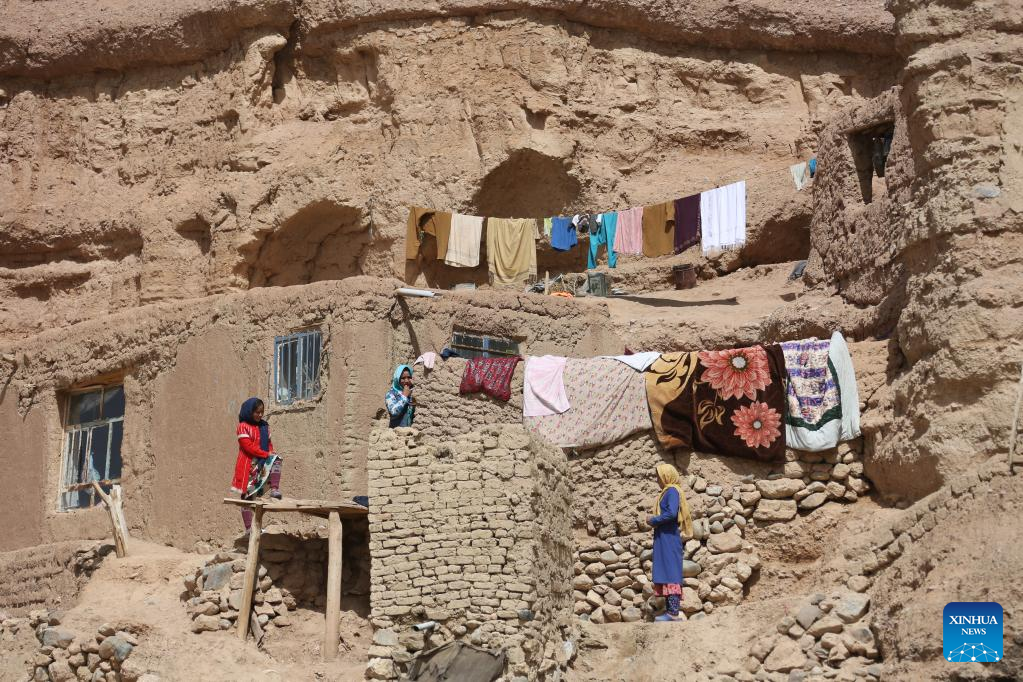
Photo taken on March 19, 2022 shows cave dwellers in Bamiyan province, Afghanistan.
For the whole of history, people have lived in caves in Afghanistan. Many people had no choice but to take up residence in one, and in central Bamiyan province many families find themselves forgotten and starving.(Photo by Saifurahmad Safi/Xinhua)
BAMIYAN, Afghanistan, March 25 (Xinhua) -- For the whole of history, people have lived in caves in Afghanistan. Many people had no choice but to take up residence in one, and in central Bamiyan province many families find themselves forgotten and starving.
"I have been living here in this cave for years. Lately, we have lived day and night without fuel or food," said 50-year-old Zarifa Gull Ahmad. Ahmad's husband is disabled and she claims that her family is the most deprived in a region of many poor households.
"We have no food to eat and no money to buy any. There are nine of us, and our only food is dry naan," said Ahmad.
After the withdrawal of foreign troops from Afghanistan after 20 years of presence in the country, more than 22 million out of some 35 million Afghans are facing acute food shortages, according to aid agency reports.
"My 13-year-old son works on the streets and earns 30 to 40 afghanis (about 0.5 U.S. dollars) a day to buy naan. I will not let him go to school because he has to work and support our family," Ahmad said.
U.S. President Joe Biden has reportedly split 7 billion dollars of frozen Afghan assets equally between the families of victims of 9/11 and humanitarian assistance for Afghans, a decision that has been almost universally condemned.
"I am the only breadwinner of my family. My husband is a drug addict who left home long ago. My children and I have to work every day to survive," another cave dweller Noria, 30, told Xinhua. Noria gets money by cleaning houses, and washing clothes and carpets.
"I do laundry and carpet cleaning and sometimes people help me with food. I am working to earn a bit more than 100 afghanis each day.
"Once I got a bag of flour, 14 kg of beans and peas, and a bottle of cooking oil from a non-governmental organization."
In Bamiyan province, once home to the giant Buddhas of Bamiyan which were destroyed in 2001, there are thousands of caves that accommodated monks centuries ago, and are currently serving as shelters for thousands.
"I work as a laborer. I used to earn 400 afghanis each day but nowadays it's more like 200 afghanis," said 37-year-old Hassan, head of an eight-member family.
Hassan, who looks older than his real age, said, "It is winter season and I have not worked for three months. Often my family's only meal is pieces of naan, sometimes rice, but never meat or fruit." (1 U.S. dollar equals about 88.4 afghanis) ■

Photo taken on March 19, 2022 shows cave dwellers in Bamiyan province, Afghanistan.
For the whole of history, people have lived in caves in Afghanistan. Many people had no choice but to take up residence in one, and in central Bamiyan province many families find themselves forgotten and starving.(Photo by Saifurahmad Safi/Xinhua)

Photo taken on March 19, 2022 shows young cave dwellers in Bamiyan province, Afghanistan.
For the whole of history, people have lived in caves in Afghanistan. Many people had no choice but to take up residence in one, and in central Bamiyan province many families find themselves forgotten and starving.(Photo by Saifurahmad Safi/Xinhua)

Photo taken on March 19, 2022 shows cave dwellers in Bamiyan province, Afghanistan.
For the whole of history, people have lived in caves in Afghanistan. Many people had no choice but to take up residence in one, and in central Bamiyan province many families find themselves forgotten and starving.(Photo by Saifurahmad Safi/Xinhua)

Photo taken on March 19, 2022 shows cave dwellers in Bamiyan province, Afghanistan.
For the whole of history, people have lived in caves in Afghanistan. Many people had no choice but to take up residence in one, and in central Bamiyan province many families find themselves forgotten and starving.(Photo by Saifurahmad Safi/Xinhua)



